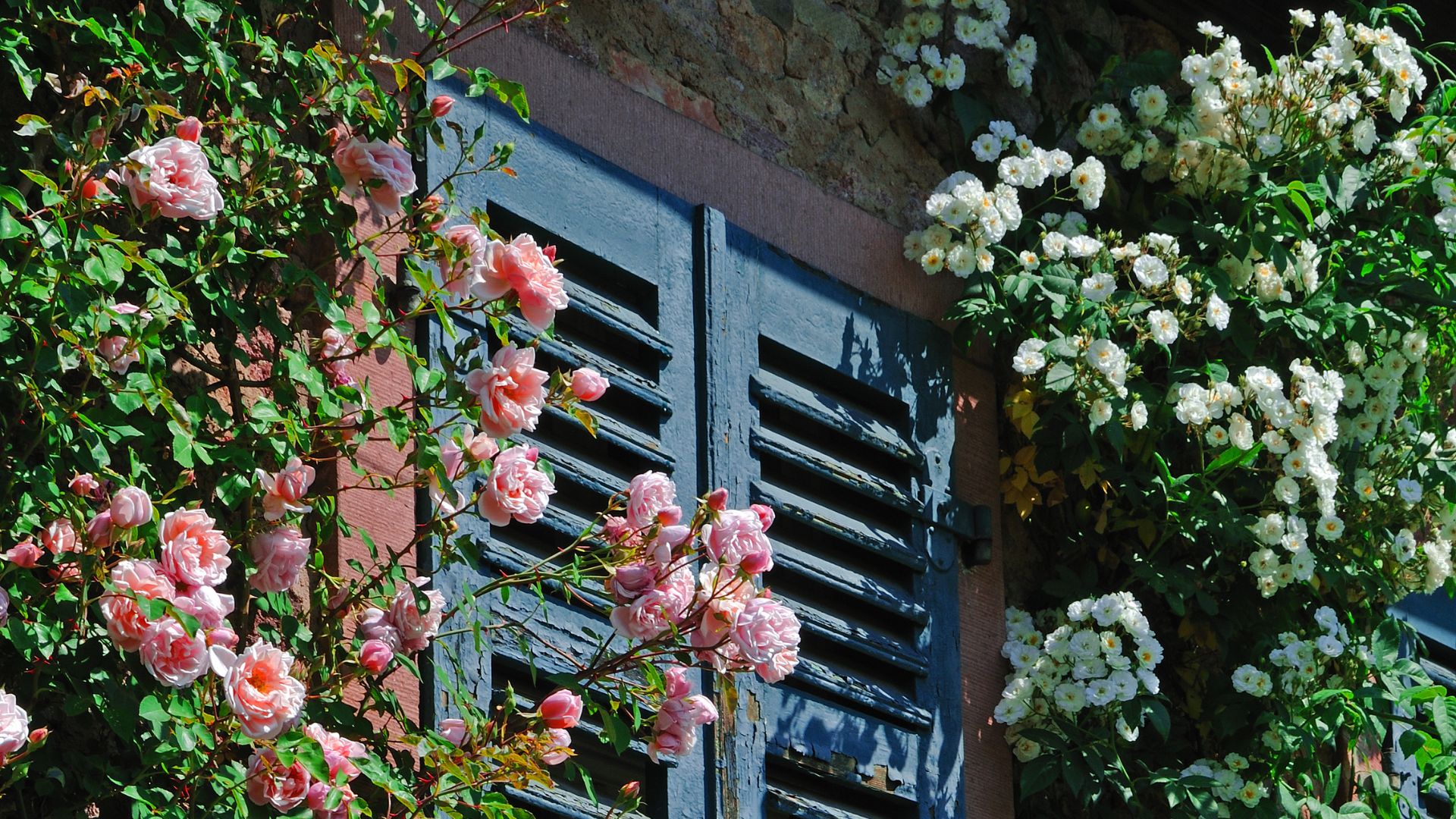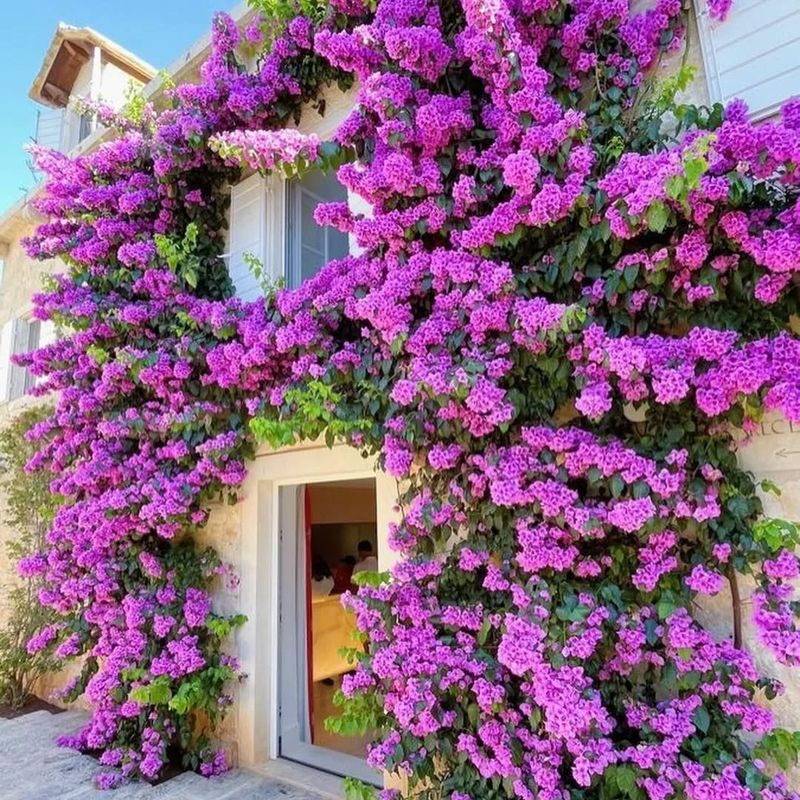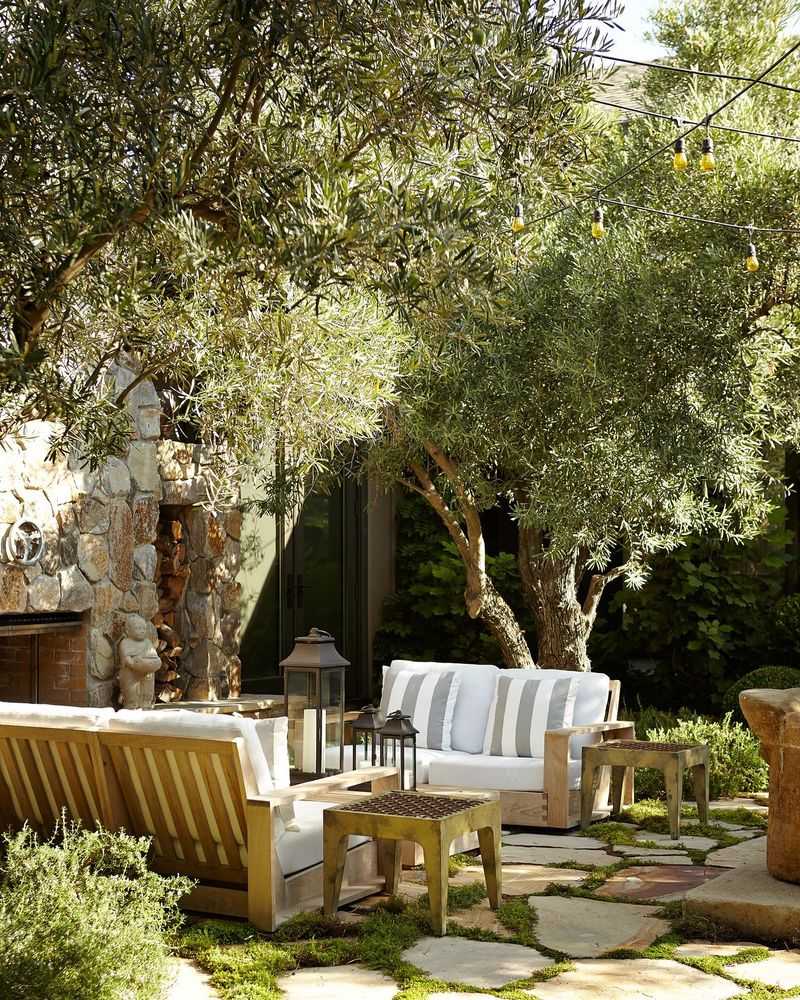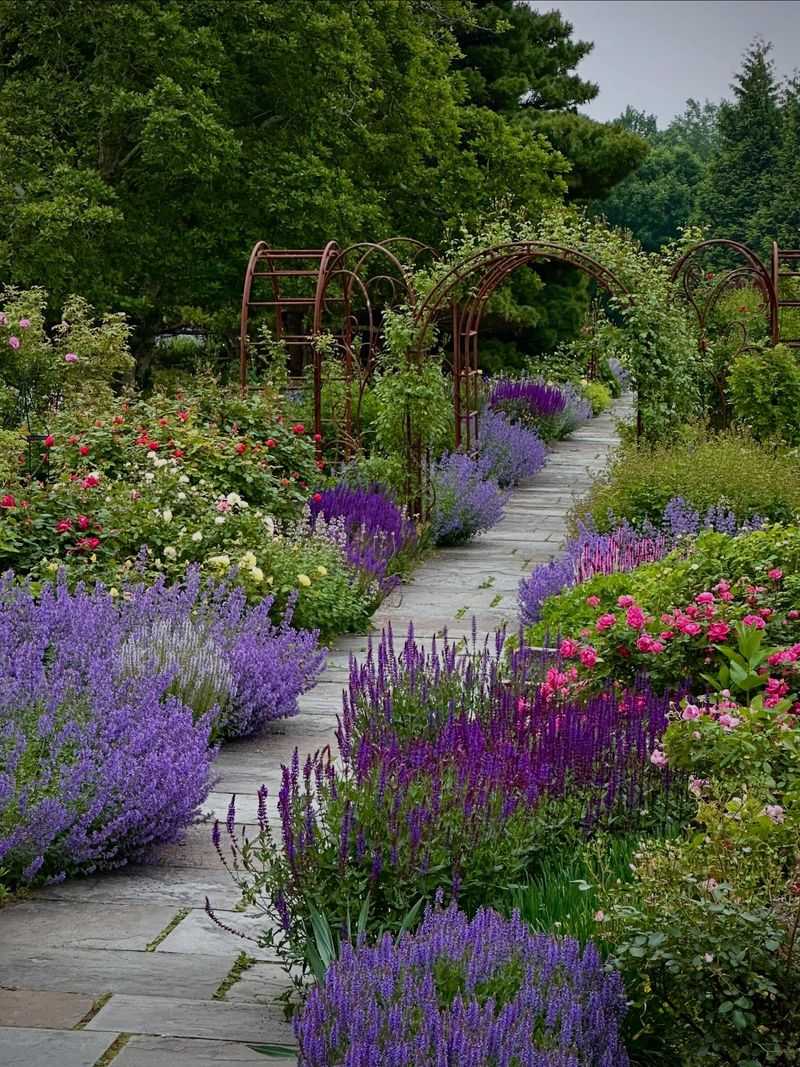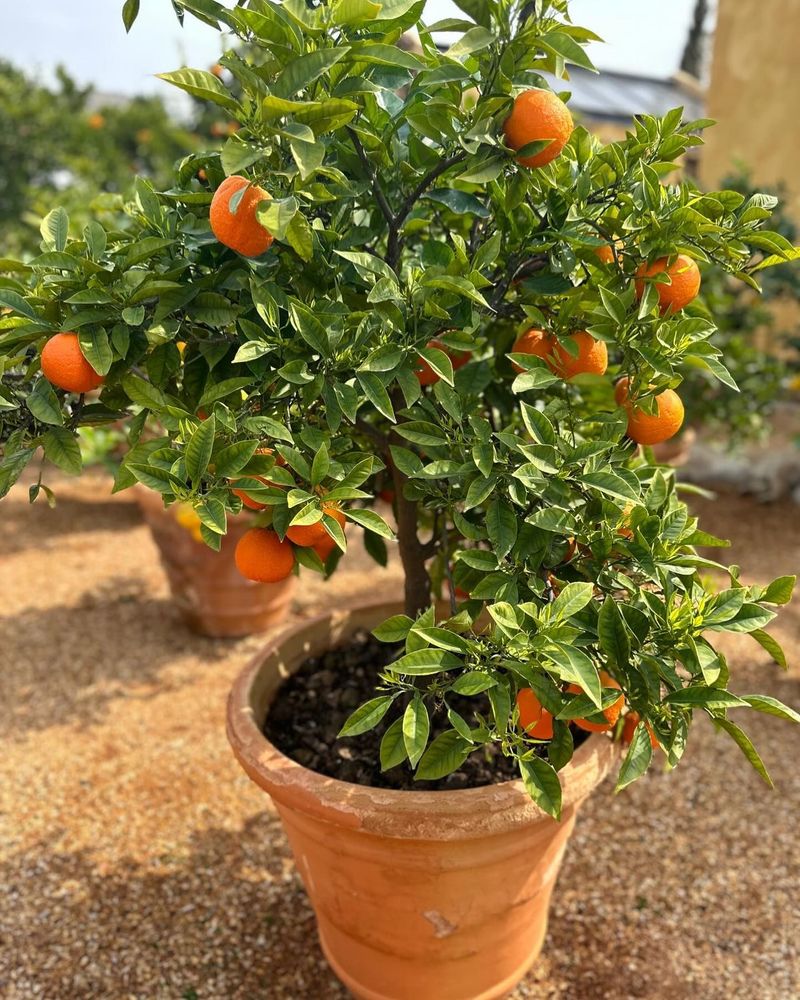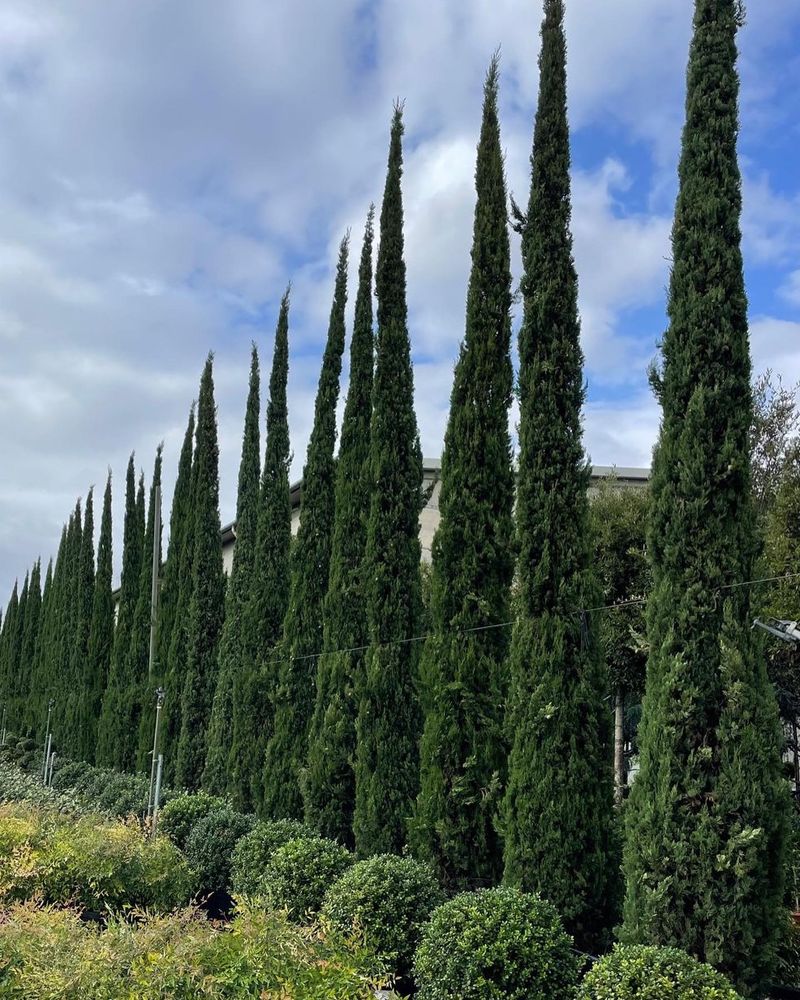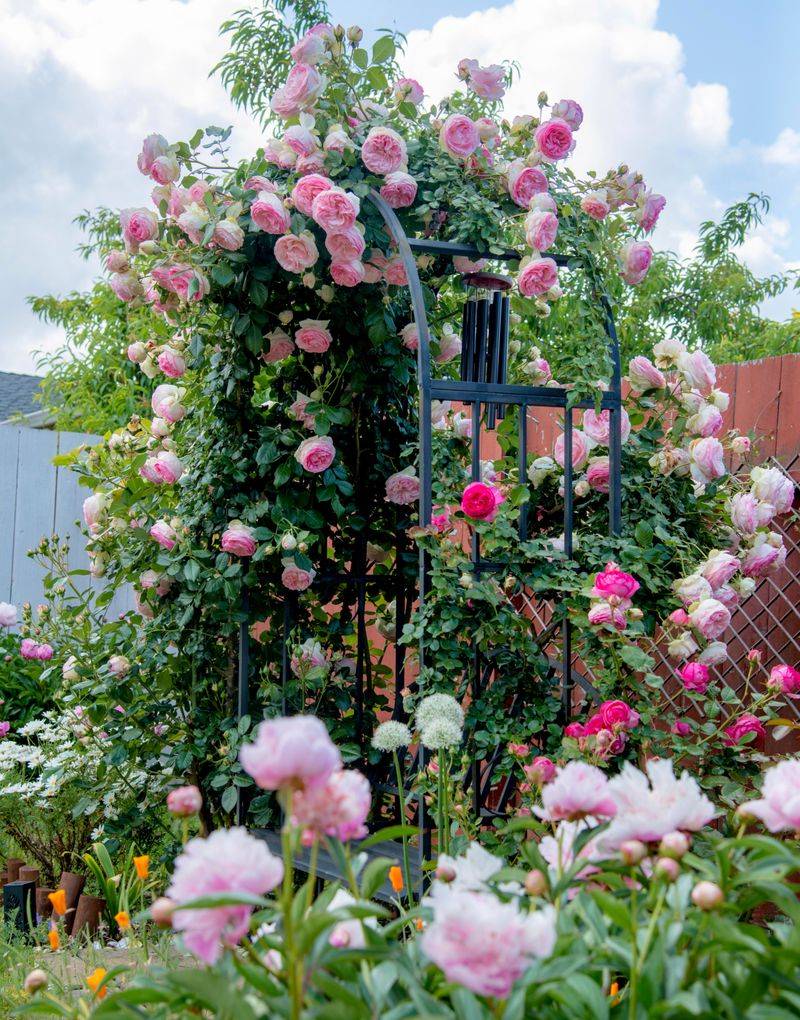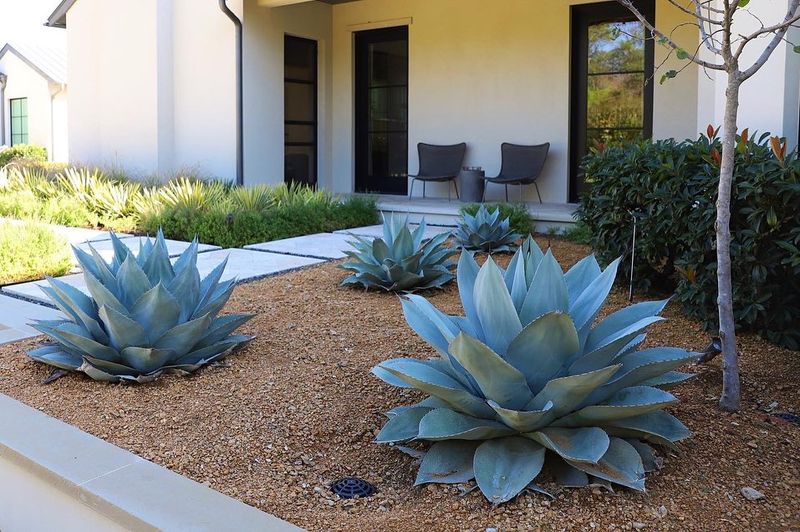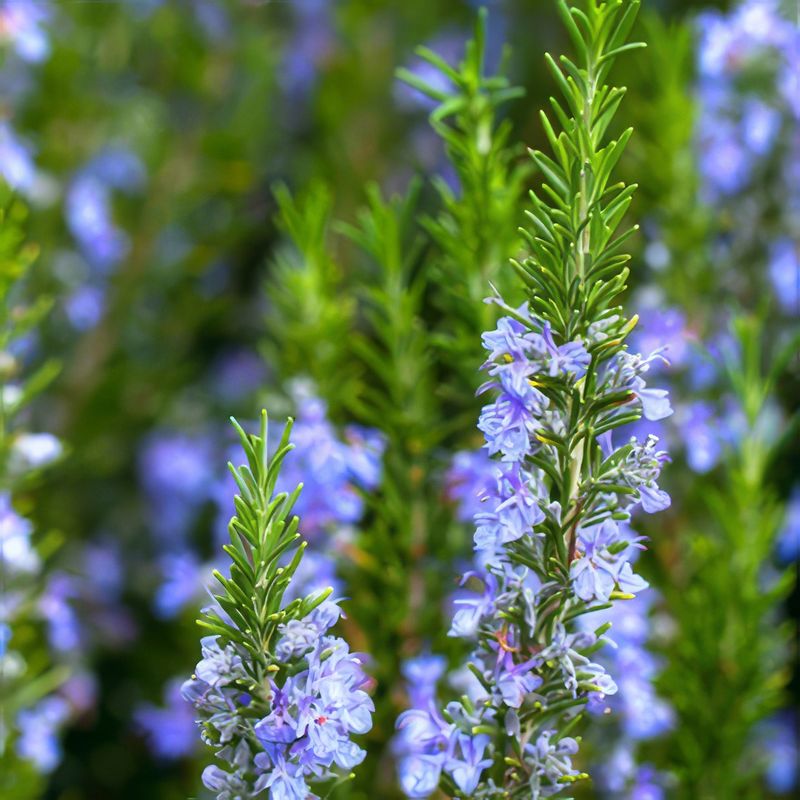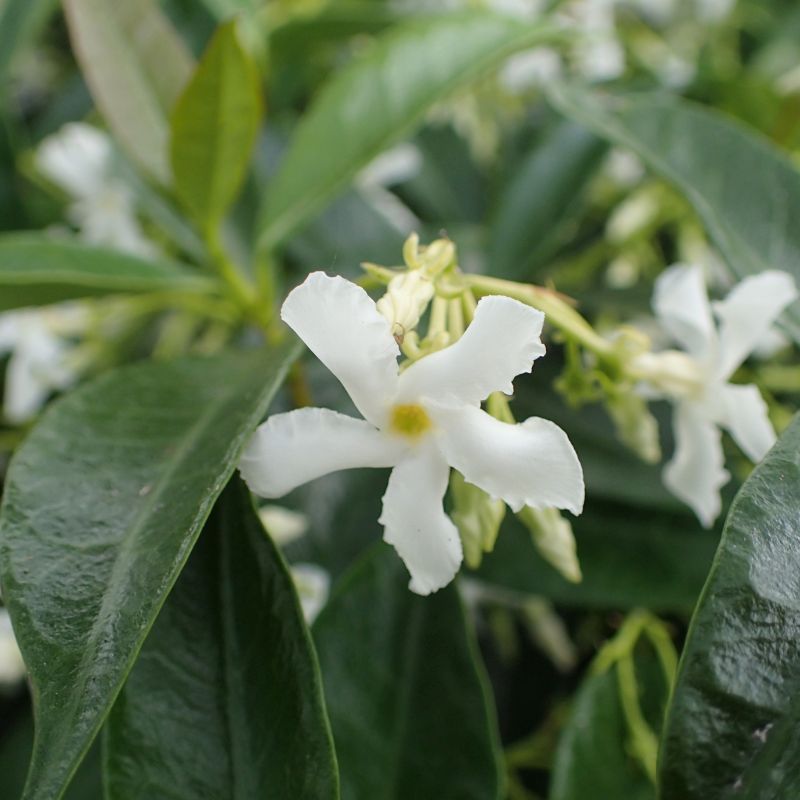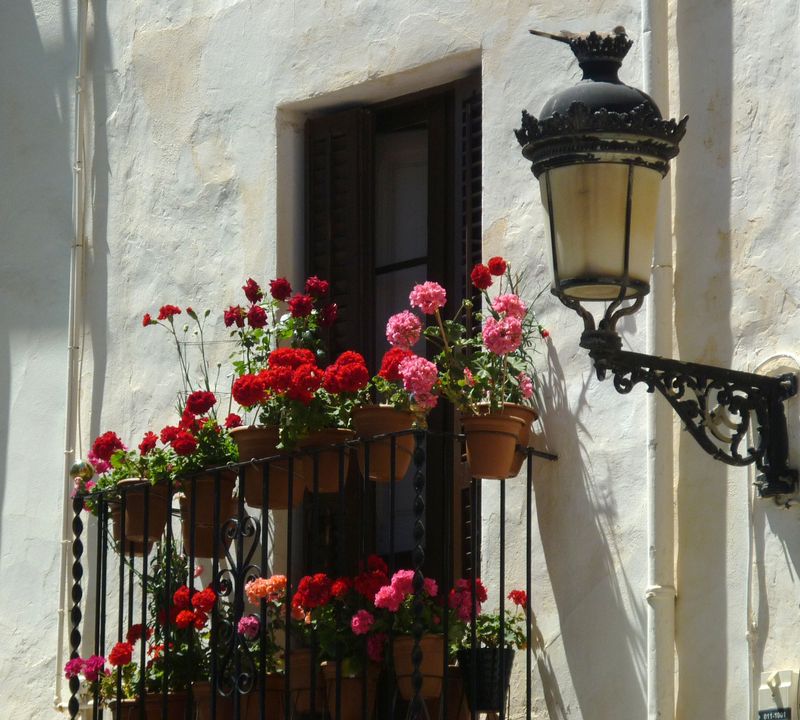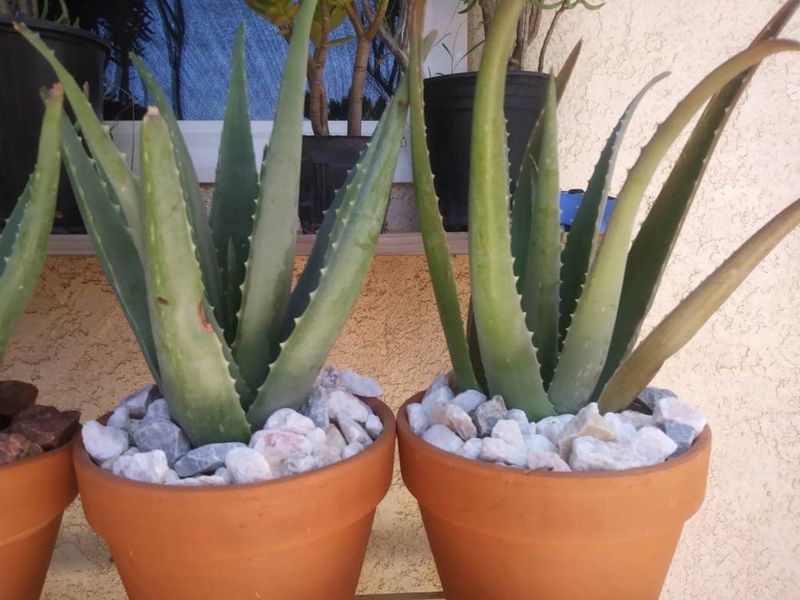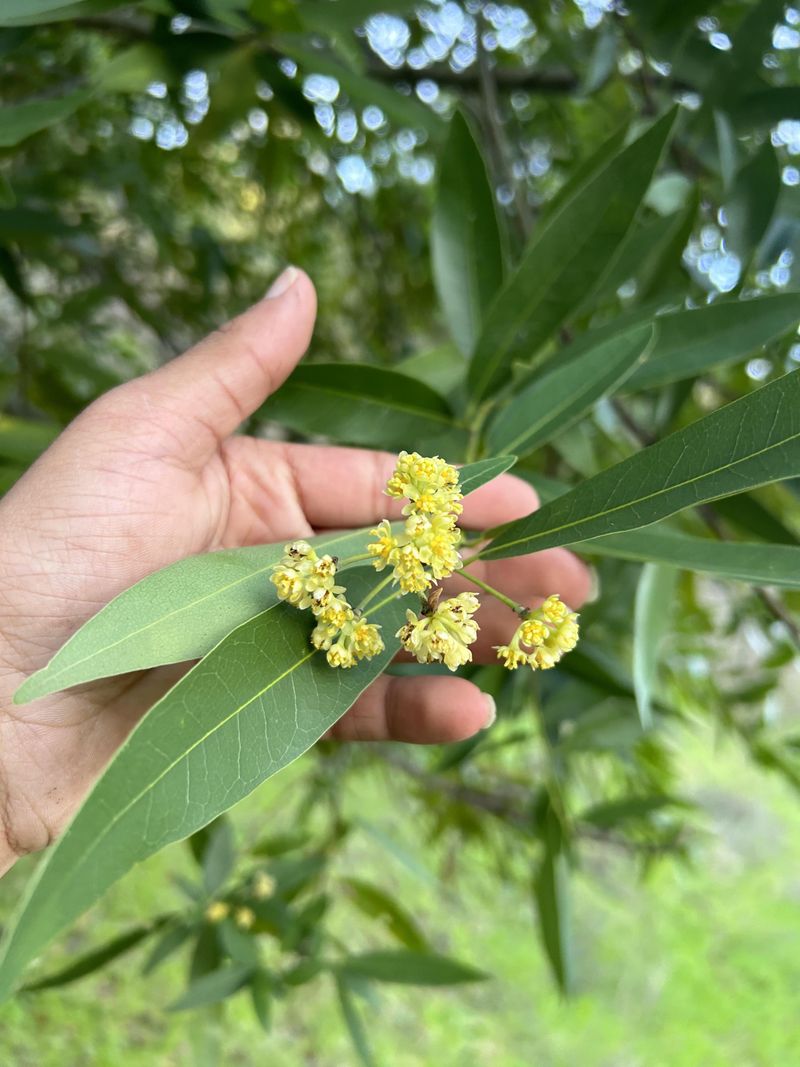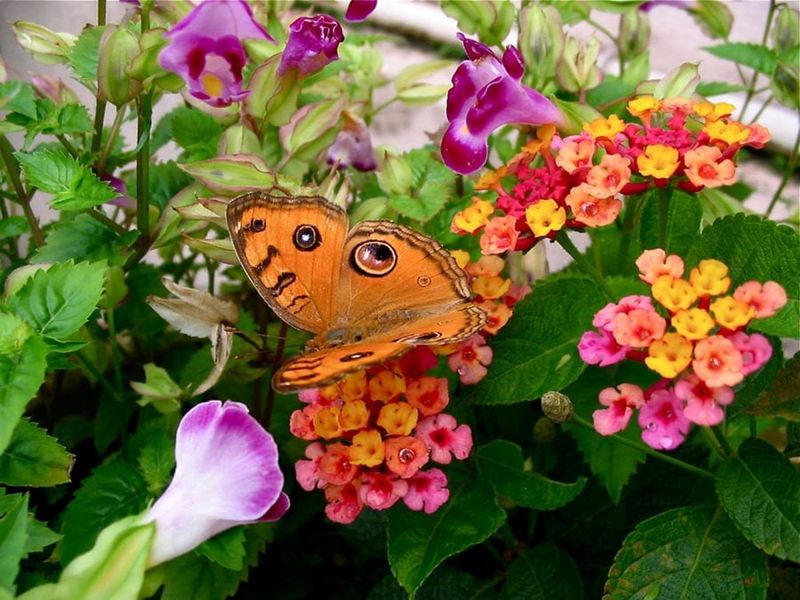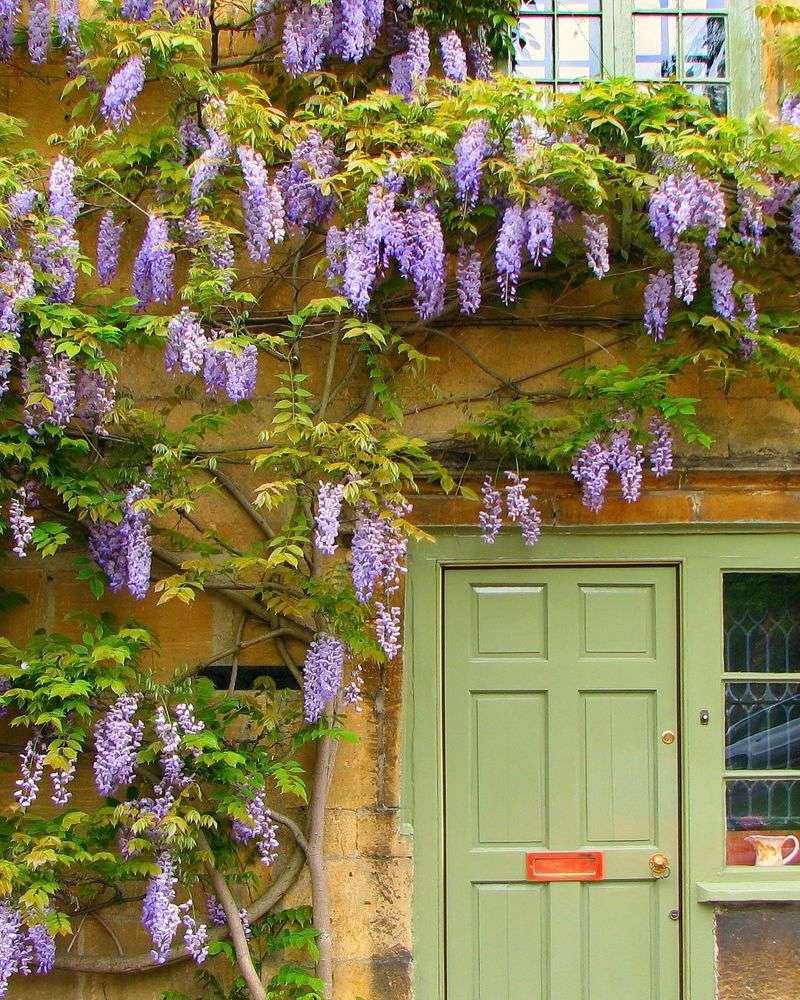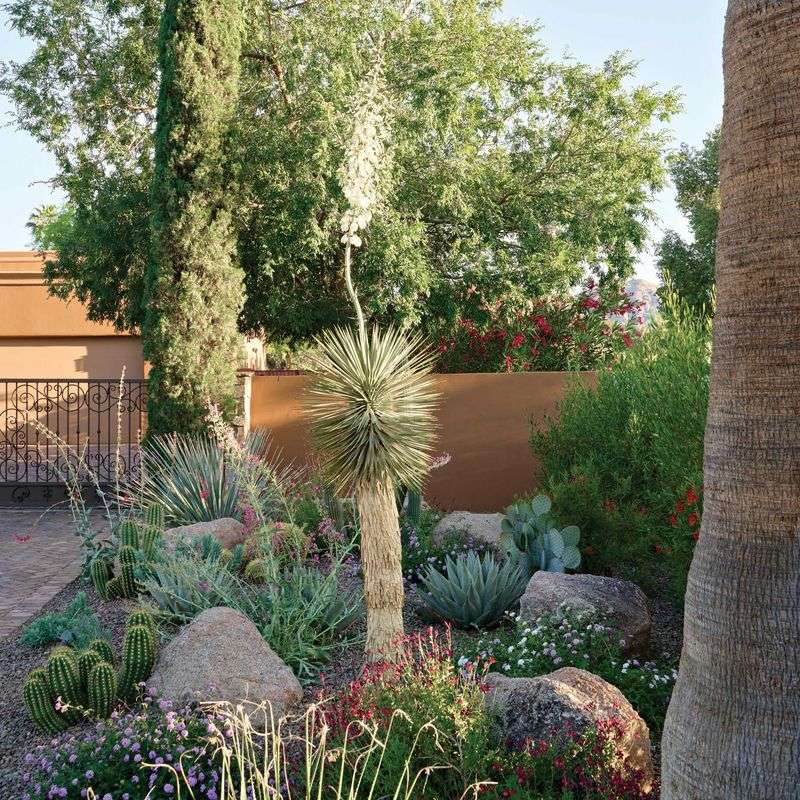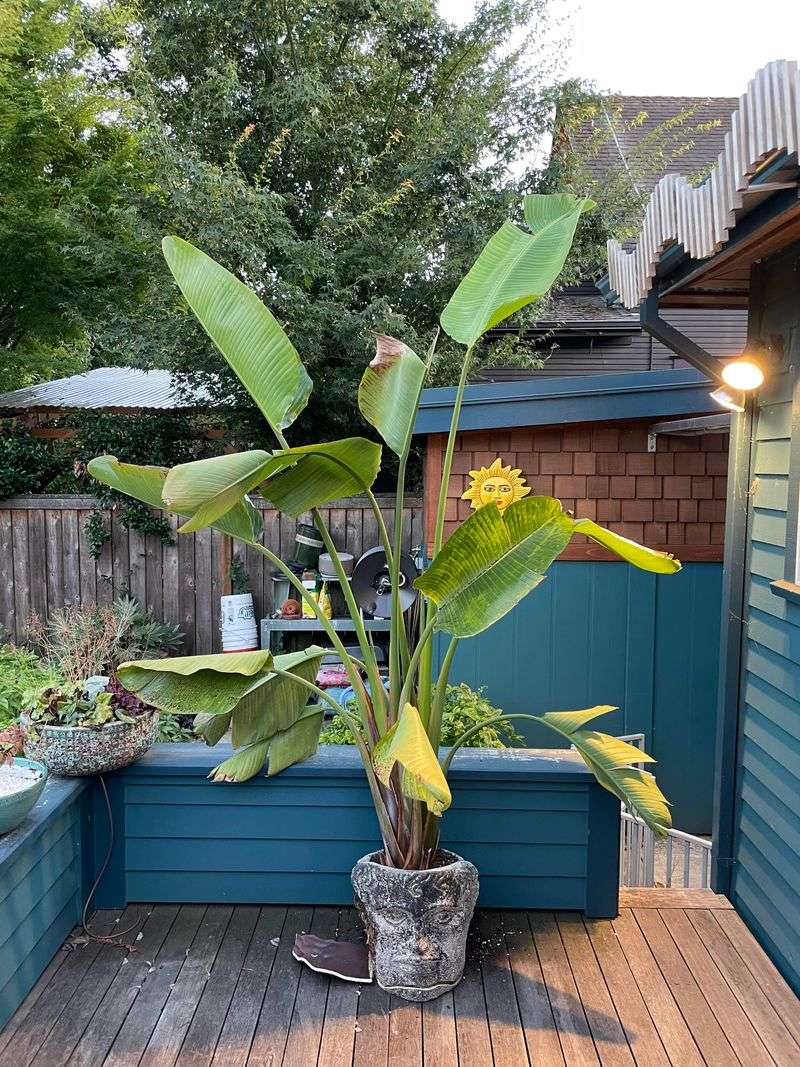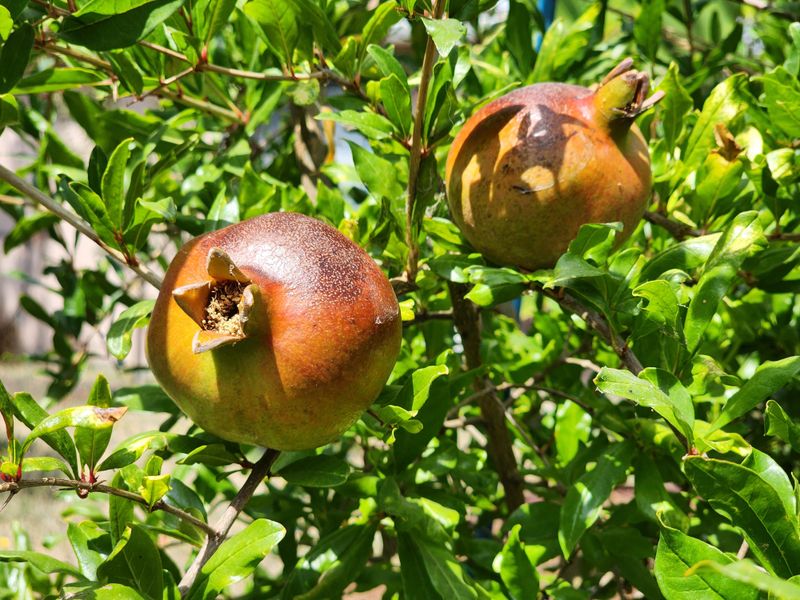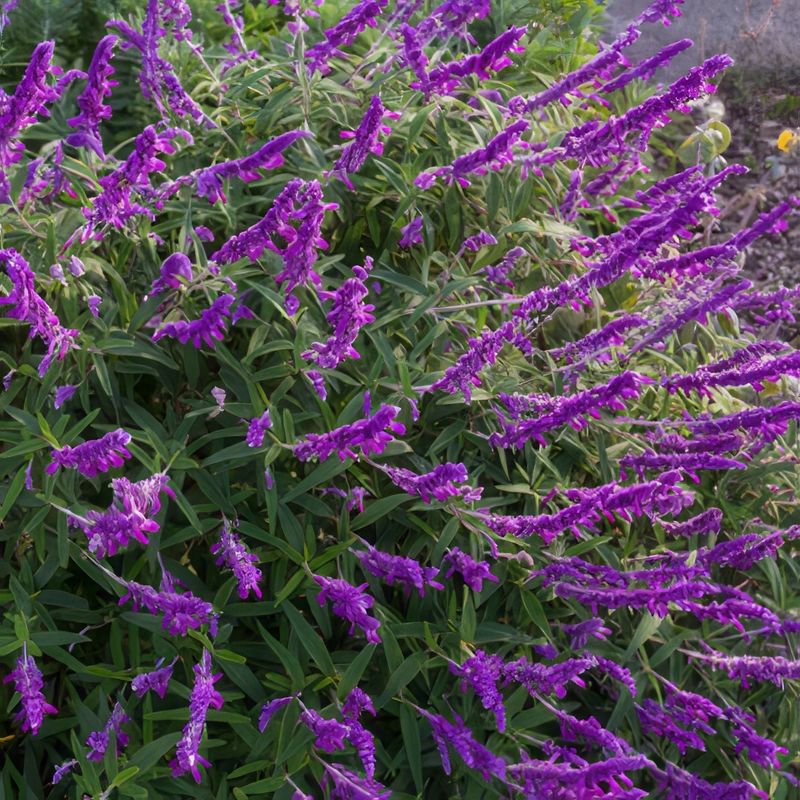I’ve always loved the relaxed, sun-soaked feeling of Spanish-style gardens—the kind where terracotta pots, tile pathways, and bursts of color make you feel like you’re on vacation. There’s something so inviting about that mix of earthy textures and vibrant greenery.
The best part? These gardens don’t just look good—they’re also practical, especially if you’re working with hot, dry summers or want to cut back on watering. By choosing the right plants, you can create a space that thrives without constant upkeep.
Even if you only have a balcony or a small patio, it’s totally possible to bring that Mediterranean charm to your space. These 18 plants are a great place to start, and they’ve made my garden feel like a little escape just outside the door.
1. Bougainvillea
Nothing captures Mediterranean drama quite like cascading walls of paper-thin bracts in hot pinks, purples, or oranges. When trained along walls or allowed to spill over pergolas, these woody vines create the quintessential Spanish garden look with minimal effort.
Surprisingly tough despite their delicate appearance, bougainvilleas thrive in poor soil and actually bloom more profusely when slightly neglected. They need full sun and excellent drainage to perform their best.
During summer months, the explosion of color transforms ordinary spaces into something magical. I’ve seen entire courtyards defined by a single mature specimen climbing up a sun-drenched wall.
2. Olive Tree
Ancient and dignified, olive trees serve as living sculptures in Spanish-inspired landscapes. Their silvery-green foliage catches the light beautifully, creating a shimmering effect when breezes pass through the garden.
Even young specimens have character, with their gnarled trunks developing interesting shapes over time. Plant them in containers for patios or directly in well-draining soil where they’ll slowly grow into statement pieces.
Many varieties remain relatively compact, making them suitable for smaller gardens. The fruits produced by mature trees can actually be cured and eaten, connecting your garden to centuries of Mediterranean culinary tradition.
3. Lavender
Fragrant waves of purple create both visual impact and sensory delight in sunny Spanish gardens. Growing in neat mounds, lavender brings structure and informal elegance to garden borders and looks especially striking when mass-planted.
Beyond its beauty, lavender attracts pollinators while naturally repelling less desirable insects. The flowers can be harvested for sachets, cooking, or simple bouquets that bring the garden’s essence indoors.
Spanish lavender (Lavandula stoechas) with its distinctive topknot-like bracts offers a particularly authentic choice. Plant it where you can brush against it while walking to release its calming scent on warm afternoons.
4. Citrus Trees
Orange, lemon, and lime trees bring year-round interest with glossy evergreen leaves, fragrant spring blossoms, and colorful fruits that hang like ornaments. Their sweet perfume fills Spanish-style courtyards, creating an atmosphere of abundance.
Growing them in decorative terracotta containers allows for repositioning throughout the seasons. Many dwarf varieties thrive in pots for years, making fresh fruit accessible even in smaller spaces.
The contrast between dark green foliage and bright fruits creates natural focal points. In cooler regions, wheeled planters let you move citrus to protected spots during winter while maintaining that authentic Spanish garden character.
5. Cypress Trees
Tall, slender sentinels that rise dramatically toward the sky, cypress trees create strong vertical elements in Spanish garden design. Their deep green, dense foliage provides year-round structure and a perfect backdrop for more colorful plants.
Traditionally used to line driveways or frame entryways, these architectural trees create instant Mediterranean atmosphere. Italian cypress (Cupressus sempervirens) grows in a naturally columnar form without needing pruning to maintain its distinctive shape.
For smaller gardens, dwarf varieties like ‘Tiny Tower’ deliver the same aesthetic impact without overwhelming the space. The formal silhouette contrasts beautifully with looser, more casual plantings nearby.
6. Climbing Roses
Climbing roses combine old-world charm with versatility, softening stone walls and wrought iron with their romantic blooms. Unlike modern hybrids, older varieties often possess the heat tolerance and disease resistance needed for authentic Spanish garden settings.
Varieties like ‘Lady Banks’ (Rosa banksiae) produce cascades of small flowers in spring, while ‘Climbing Cecile Brunner’ offers repeat blooms throughout the growing season. Their informal growth habits create a sense of established elegance.
Training them along pergolas creates shaded retreats for hot afternoons. My grandmother’s Spanish courtyard featured a climbing rose that had wound itself through an ancient arbor, creating a living ceiling of fragrance each May.
7. Agave
Architectural and bold, agaves create strong focal points with their symmetrical rosettes of thick, pointed leaves. Their structural forms provide year-round interest and contrast beautifully with softer plantings in Spanish garden designs.
Available in various sizes from petite to massive, these succulents fit spaces large and small. Blue-gray varieties like Agave parryi bring a cooling visual element to hot gardens while adding textural contrast to stucco walls.
Once established, they require almost no supplemental water, making them perfect for authentic Spanish garden beds. Consider their eventual size carefully—some varieties remain compact while others can reach impressive dimensions over time.
8. Rosemary
Aromatic and adaptable, rosemary transitions effortlessly between herb garden and ornamental planting in Spanish-inspired landscapes. The upright varieties form excellent informal hedges while prostrate types cascade beautifully over walls or container edges.
Tiny blue flowers appear among the needle-like leaves, attracting bees and butterflies to the garden. The resinous foliage remains fragrant year-round, releasing its scent whenever you brush past or harvest sprigs for cooking.
Hardy and drought-tolerant once established, rosemary asks little while giving much. Plant it along pathways where its fragrance can be appreciated daily and its evergreen presence maintains garden structure through all seasons.
9. Star Jasmine
Graceful and versatile, jasmine vines create a sensory experience that defines Spanish garden evenings. The sweet fragrance of star jasmine (Trachelospermum jasminoides) or Spanish jasmine (Jasminum grandiflorum) fills the air, especially after sunset.
White blossoms stand out beautifully against the dark green foliage, creating a luminous effect in moonlit gardens. Training jasmine on trellises near seating areas or bedroom windows ensures its perfume can be fully appreciated.
Most varieties grow vigorously in well-drained soil and full to partial sun. Their twining habit makes them perfect for softening architectural elements like columns or arches while maintaining that authentic Spanish garden character.
10. Geraniums
Cheerful and resilient, geraniums bring reliable color to Spanish garden containers and borders throughout the growing season. Unlike many flowering plants, they actually perform better with some afternoon shade in hot climates.
Traditional red varieties look stunning against whitewashed walls, but don’t overlook coral, pink, or white cultivars for variety. Their scented foliage adds another sensory dimension to the garden experience, especially when brushed against on warm days.
Deadheading spent blooms encourages continuous flowering from spring through fall. I’ve seen geraniums in Spanish villages that have been passed down through generations, growing in cherished family containers on sunny doorsteps.
11. Aloe Vera
Practical and distinctive, aloe vera combines medicinal benefits with striking form in Spanish garden settings. The fleshy, serrated leaves store water, allowing the plant to thrive in the hot, dry conditions typical of Mediterranean climates.
Tall flower stalks emerge in season, topped with tubular orange or yellow blooms that attract hummingbirds. Unlike many succulents, aloe vera multiplies readily, producing offsets that can be separated to create new plants.
Historically valued for treating burns and skin irritations, having aloe vera growing in terracotta pots means garden-fresh remedies are always within reach. The architectural form looks particularly striking when placed near smooth stucco surfaces.
12. Bay Laurel
Stately and aromatic, bay laurel creates a living connection to Spanish culinary traditions while serving as an excellent structural element in the garden. The glossy, deep green leaves remain attractive year-round on plants that can be shaped as needed.
Traditionally grown as small trees or pruned into topiary forms, bay laurel adapts well to container cultivation. This makes it perfect for framing entryways or adding height to courtyard corners in Spanish-style gardens.
Beyond its ornamental value, harvesting leaves for cooking creates a direct garden-to-table experience. A mature specimen develops a wonderfully gnarled trunk over time, adding character that perfectly complements aged stucco and terracotta.
13. Lantana
Vibrant and heat-loving, lantana produces clusters of multicolored flowers that seem to glow in the Spanish garden sunshine. The flowers often display a fascinating color-changing quality, with different hues appearing within the same cluster as blooms age.
Butterflies and hummingbirds flock to lantana, bringing movement and life to garden spaces. The slightly aromatic foliage helps deter deer and many garden pests naturally.
Low-growing varieties make excellent ground covers for sunny slopes, while more upright forms create informal flowering hedges. Few plants offer such reliable color through the hottest months when many other flowers have faded in the Spanish summer heat.
14. Wisteria
Romantic and resilient, wisteria creates spectacular seasonal displays with its pendulous flower clusters that transform garden structures into living art. The twisting, woody stems develop character with age, becoming garden features even when not in bloom.
Training wisteria over pergolas or along upper walls creates cooling shade in summer while allowing warming sun in winter after leaves drop. The fragrant purple flowers create an unforgettable sensory experience during springtime in Spanish-inspired gardens.
Japanese wisteria (Wisteria floribunda) produces the longest flower clusters, while Chinese wisteria (Wisteria sinensis) offers a more intense fragrance. Both require sturdy support and occasional pruning to maintain their best flowering performance.
15. Yucca
Bold and dramatic, yucca plants bring southwestern character to Spanish garden designs with their sword-like leaves and impressive flower spikes. The architectural silhouette creates strong visual impact year-round, especially when strategically placed to catch evening light.
Varieties like Yucca rostrata develop trunk-like stems over time, becoming living sculptures in the landscape. Their cream-colored flower stalks rise impressively above the foliage, creating vertical drama that complements Spanish architectural elements.
Once established, yuccas require almost no supplemental water or care. Their structural form pairs beautifully with softer, more flowing plants while maintaining that authentic Spanish garden feeling through all seasons.
16. Bird Of Paradise
Striking and architectural, bird of paradise plants bring exotic flair to sheltered corners of Spanish-style gardens. The distinctive orange and blue flowers resemble tropical birds in flight, creating conversation pieces among more traditional Mediterranean plantings.
Large, paddle-shaped leaves form impressive clumps that add tropical texture to the landscape. In frost-free areas, they can reach impressive dimensions, becoming anchor plants in garden designs.
Growing bird of paradise in decorative containers allows for repositioning to catch optimal sunlight. The cut flowers last remarkably long in arrangements, bringing the garden’s exotic character indoors where their unusual form can be appreciated up close.
17. Pomegranate
Historical and ornamental, pomegranate trees connect Spanish gardens to ancient Mediterranean traditions while providing multi-season interest. Spring brings coral-red tubular flowers that attract hummingbirds, followed by round fruits that develop through summer.
The glossy fruits turn ruby-red in fall, hanging like ornaments among the bright green foliage. Even the winter silhouette has character, with gnarled branches creating sculptural forms in the garden.
Dwarf varieties like ‘Nana’ stay compact enough for containers while still producing decorative fruits. The fruits themselves symbolize abundance in Spanish culture, making pomegranate trees meaningful additions to courtyards and entryway gardens.
18. Mexican Sage
Soft and movement-filled, Mexican sage brings welcome late-season color to Spanish garden designs when many other perennials have finished blooming. The velvety purple flower spikes attract butterflies and hummingbirds from late summer through fall.
Gray-green foliage provides textural contrast to broader-leaved plants while handling heat with grace. Unlike many ornamental plants, Mexican sage actually looks better without supplemental water once established, developing a naturally appealing form.
Planting it where afternoon breezes can sway the flower spikes adds kinetic energy to garden spaces. After frost, the dried flower stalks continue providing visual interest through winter before being pruned back for fresh spring growth.

